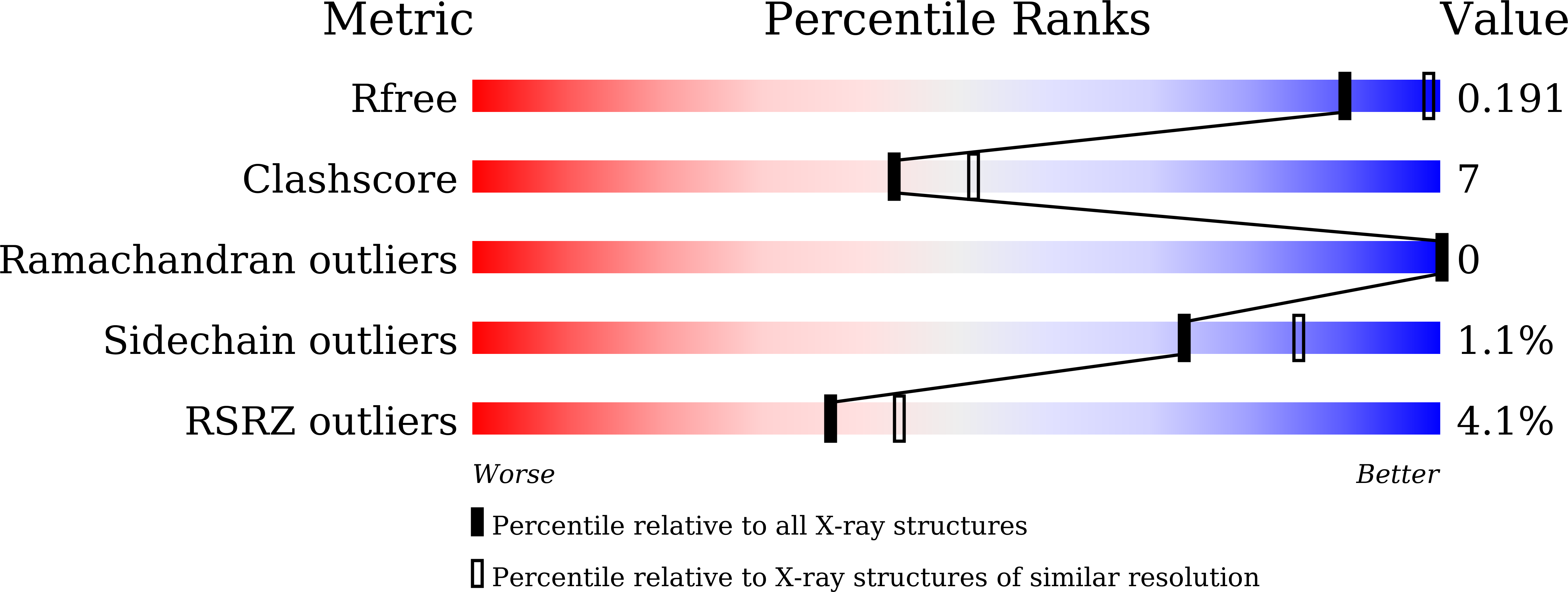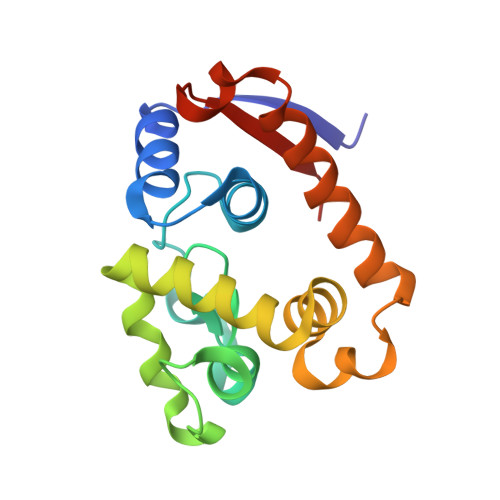Structural and biochemical insights into the substrate-binding mechanism of a novel glycoside hydrolase family 134 beta-mannanase.
You, X., Qin, Z., Li, Y.X., Yan, Q.J., Li, B., Jiang, Z.Q.(2018) Biochim Biophys Acta Gen Subj 1862: 1376-1388
- PubMed: 29550433
- DOI: https://doi.org/10.1016/j.bbagen.2018.03.016
- Primary Citation of Related Structures:
5XTJ, 5XTT, 5XU5, 5XUG, 5XUL - PubMed Abstract:
Mannan is one of the major constituent groups of hemicellulose, which is a renewable resource from higher plants. β-Mannanases are enzymes capable of degrading lignocellulosic biomass. Here, an endo-β-mannanase from Rhizopus microsporus (RmMan134A) was cloned and expressed. The recombinant RmMan134A showed maximal activity at pH 5.0 and 50 °C, and exhibited high specific activity towards locust bean gum (2337 U/mg). To gain insight into the substrate-binding mechanism of RmMan134A, four complex structures (RmMan134A-M3, RmMan134A-M4, RmMan134A-M5 and RmMan134A-M6) were further solved. These structures showed that there were at least seven subsites (-3 to +4) in the catalytic groove of RmMan134A. Mannose in the -1 subsite hydrogen bonded with His113 and Tyr131, revealing a unique conformation. Lys48 and Val159 formed steric hindrance, which impedes to bond with galactose branches. In addition, the various binding modes of RmMan134A-M5 indicated that subsites -2 to +2 are indispensable during the hydrolytic process. The structure of RmMan134A-M4 showed that mannotetrose only binds at subsites +1 to +4, and RmMan134A could therefore not hydrolyze mannan oligosaccharides with degree of polymerization ≤4. Through rational design, the specific activity and optimal conditions of RmMan134A were significantly improved. The purpose of this paper is to investigate the structure and function of fungal GH family 134 β-1,4-mannanases, and substrate-binding mechanism of GH family 134 members.
Organizational Affiliation:
Beijing Advanced Innovation Center for Food Nutrition and Human Health, College of Engineering, China Agricultural University, Beijing 100083, China.
















